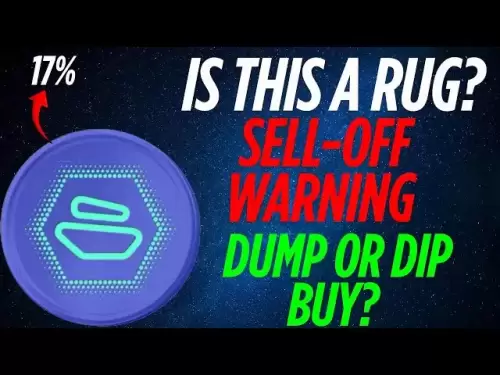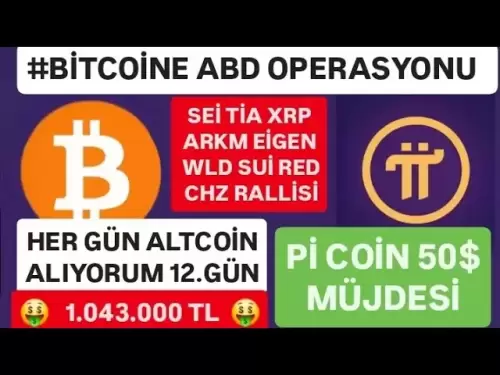-
 Bitcoin
Bitcoin $108,708.8110
0.60% -
 Ethereum
Ethereum $2,561.6057
1.91% -
 Tether USDt
Tether USDt $1.0001
-0.03% -
 XRP
XRP $2.2795
0.57% -
 BNB
BNB $662.2393
1.00% -
 Solana
Solana $153.1346
3.74% -
 USDC
USDC $1.0000
0.00% -
 TRON
TRON $0.2877
0.97% -
 Dogecoin
Dogecoin $0.1710
3.93% -
 Cardano
Cardano $0.5871
1.61% -
 Hyperliquid
Hyperliquid $39.6663
1.68% -
 Sui
Sui $2.9032
0.79% -
 Bitcoin Cash
Bitcoin Cash $496.1879
1.71% -
 Chainlink
Chainlink $13.5807
3.01% -
 UNUS SED LEO
UNUS SED LEO $9.0777
0.61% -
 Stellar
Stellar $0.2514
4.51% -
 Avalanche
Avalanche $18.1761
1.86% -
 Shiba Inu
Shiba Inu $0.0...01173
1.72% -
 Toncoin
Toncoin $2.8010
-4.23% -
 Hedera
Hedera $0.1594
3.21% -
 Litecoin
Litecoin $87.0257
-0.53% -
 Monero
Monero $319.1217
1.79% -
 Polkadot
Polkadot $3.3853
0.68% -
 Dai
Dai $0.9999
-0.01% -
 Ethena USDe
Ethena USDe $1.0003
0.02% -
 Bitget Token
Bitget Token $4.3420
-0.97% -
 Uniswap
Uniswap $7.3772
1.39% -
 Aave
Aave $286.6277
5.61% -
 Pepe
Pepe $0.0...09994
2.33% -
 Pi
Pi $0.4589
1.76%
How is Bitfinex's funding rate calculated?
Bitfinex calculates its funding rate using a formula that includes the premium index, interest rate, and a clamp function to ensure price alignment in perpetual futures trading.
Apr 23, 2025 at 10:01 pm

How is Bitfinex's Funding Rate Calculated?
Bitfinex, one of the leading cryptocurrency exchanges, uses a unique mechanism called the funding rate to maintain the balance between perpetual futures and the underlying spot market prices. Understanding how Bitfinex calculates its funding rate is crucial for traders looking to engage in perpetual futures trading on this platform. This article will delve into the detailed mechanics of Bitfinex's funding rate calculation, ensuring that all steps and nuances are thoroughly explained.
Understanding Perpetual Futures and Funding Rates
Perpetual futures are a type of futures contract that does not have an expiration date, allowing traders to hold positions indefinitely. To ensure that the perpetual futures price stays closely aligned with the spot price, exchanges like Bitfinex implement a funding rate. This rate is periodically exchanged between long and short position holders, incentivizing the convergence of the futures price with the spot price.
Components of Bitfinex's Funding Rate
Bitfinex's funding rate is calculated based on several key components:
- Premium Index: This is the difference between the perpetual futures price and the spot price.
- Interest Rate: This represents the cost of capital and is typically sourced from a reliable benchmark, such as the US dollar LIBOR rate.
- Clamp Function: This function limits the maximum funding rate to prevent extreme volatility.
The Calculation Formula
The funding rate on Bitfinex is calculated using the following formula:
[ \text{Funding Rate} = \text{Premium Index} + \text{Clamp}(\text{Premium Index} - \text{Interest Rate}, -1\%, 1\%) ]
Let's break down each part of this formula:
- Premium Index: This is the difference between the perpetual futures price and the spot price over a certain period, typically calculated as a moving average to smooth out short-term fluctuations.
- Interest Rate: This is the cost of capital, often taken from a widely accepted benchmark like the US dollar LIBOR rate.
- Clamp Function: This function ensures that the funding rate does not exceed a certain range, typically set between -1% and 1%. The clamp function is defined as:
[ \text{Clamp}(x, a, b) = \begin{cases}
a & \text{if } x < a \
x & \text{if } a \leq x \leq b \
b & \text{if } x > b
\end{cases} ]
Detailed Calculation Process
To understand how Bitfinex calculates the funding rate, let's go through a step-by-step process:
Calculate the Premium Index: Bitfinex calculates the premium index as the difference between the perpetual futures price and the spot price over a certain period. This is typically done using a moving average to smooth out short-term fluctuations.
Determine the Interest Rate: The interest rate is sourced from a reliable benchmark, such as the US dollar LIBOR rate. This rate represents the cost of capital and is used to adjust the funding rate.
Apply the Clamp Function: The clamp function is applied to the difference between the premium index and the interest rate. This ensures that the funding rate does not exceed the set range of -1% to 1%.
Calculate the Final Funding Rate: The final funding rate is the sum of the premium index and the result of the clamp function. This rate is then used to determine the amount of funding that needs to be exchanged between long and short position holders.
Example Calculation
To illustrate how Bitfinex calculates the funding rate, let's consider an example:
- Premium Index: Suppose the premium index is calculated to be 0.5%.
- Interest Rate: Assume the interest rate is 0.1%.
- Clamp Function: The difference between the premium index and the interest rate is 0.5% - 0.1% = 0.4%. Applying the clamp function to this value, we get:
[ \text{Clamp}(0.4\%, -1\%, 1\%) = 0.4\% ]
- Final Funding Rate: The final funding rate is then calculated as:
[ \text{Funding Rate} = 0.5\% + 0.4\% = 0.9\% ]
In this example, the funding rate would be 0.9%, meaning that long position holders would pay 0.9% of their position value to short position holders.
Frequency of Funding Rate Adjustments
Bitfinex adjusts the funding rate at regular intervals, typically every 8 hours. This ensures that the perpetual futures price remains closely aligned with the spot price over time. Traders should be aware of these intervals and how they might impact their trading strategies.
Impact on Trading Strategies
Understanding the funding rate is crucial for traders, as it can significantly impact their trading strategies. For instance, if the funding rate is high, long position holders will have to pay more to short position holders, which could affect the profitability of holding long positions. Conversely, short position holders might benefit from high funding rates.
Traders can use the funding rate to gauge market sentiment and adjust their positions accordingly. For example, a consistently high funding rate might indicate a bullish market, while a low or negative funding rate could suggest bearish sentiment.
Frequently Asked Questions
Q: How often does Bitfinex adjust the funding rate?
A: Bitfinex adjusts the funding rate every 8 hours to ensure that the perpetual futures price remains closely aligned with the spot price.
Q: What happens if the funding rate exceeds the clamp function's limits?
A: The clamp function ensures that the funding rate does not exceed the set range of -1% to 1%. If the calculated funding rate falls outside these limits, it is adjusted to the nearest limit, either -1% or 1%.
Q: Can the funding rate be negative?
A: Yes, the funding rate can be negative. A negative funding rate means that short position holders pay long position holders, which can occur when the perpetual futures price is lower than the spot price.
Q: How does the funding rate affect my trading strategy?
A: The funding rate can significantly impact your trading strategy. High funding rates can make holding long positions more expensive, while low or negative funding rates can benefit short positions. Traders should consider the funding rate when deciding whether to enter or exit positions.
Disclaimer:info@kdj.com
The information provided is not trading advice. kdj.com does not assume any responsibility for any investments made based on the information provided in this article. Cryptocurrencies are highly volatile and it is highly recommended that you invest with caution after thorough research!
If you believe that the content used on this website infringes your copyright, please contact us immediately (info@kdj.com) and we will delete it promptly.
- Ripple, XRP, and AI Tokens: Is Ruvi AI the Next Big Thing?
- 2025-07-08 05:30:12
- Crypto Investment: BlockDAG, Litecoin, and the Solana Meme Coin Mania
- 2025-07-08 06:10:12
- Altcoins in Focus: BlockDAG, Litecoin, and the Shifting Crypto Landscape
- 2025-07-08 05:35:12
- BNB's Bullish Breakout: Riding the $600 Support Level Wave
- 2025-07-08 04:55:13
- Solana ETF on Hold: SEC Delay and Crypto Regulation Scrutiny
- 2025-07-08 06:10:12
- Altcoin, Date, Price: Navigating the Crypto Bill & Meme Coin Mania
- 2025-07-08 06:15:12
Related knowledge

How to recover a lost Binance account
Jul 07,2025 at 09:07pm
What Happens When a Binance Account Is Lost?Losing access to your Binance account can be a distressing experience, especially if you hold significant digital assets. This typically occurs due to forgotten login credentials, loss of two-factor authentication (2FA) devices, or compromised accounts. Understanding the exact reason behind losing access is cr...
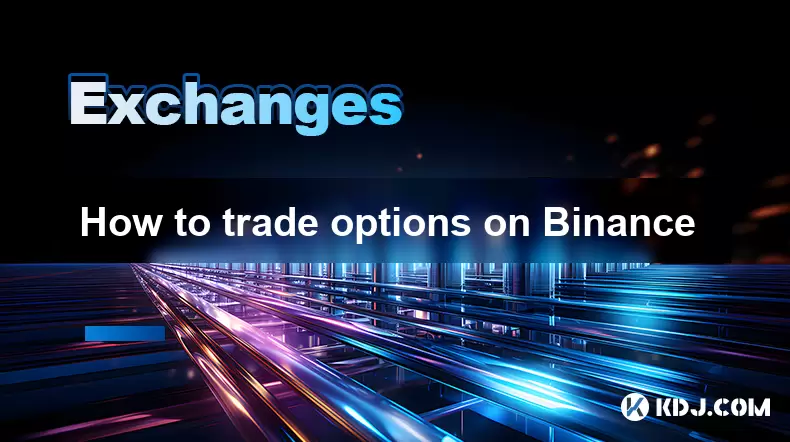
How to trade options on Binance
Jul 08,2025 at 04:35am
Understanding Options Trading on BinanceOptions trading allows investors to speculate on the future price of an asset without owning it. On Binance, users can trade crypto options, which are derivative contracts that give traders the right—but not the obligation—to buy or sell a cryptocurrency at a predetermined price before a specific date. This form o...

How to read Binance charts
Jul 07,2025 at 08:14pm
Understanding the Basics of Binance ChartsReading Binance charts effectively is essential for making informed trading decisions in the cryptocurrency market. Before diving into technical indicators and candlestick patterns, it's important to understand the basic layout of a chart on the Binance platform. The default chart interface displays price moveme...
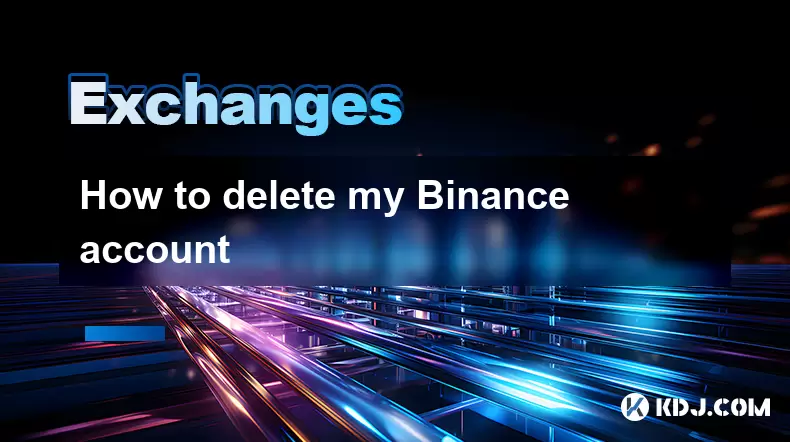
How to delete my Binance account
Jul 08,2025 at 06:35am
How to Delete My Binance AccountIf you're considering deleting your Binance account, it's important to understand the process thoroughly. Binance is one of the largest cryptocurrency exchanges globally, and permanently closing your account involves several steps. This guide will walk you through each necessary action to ensure a smooth deletion. Prepari...
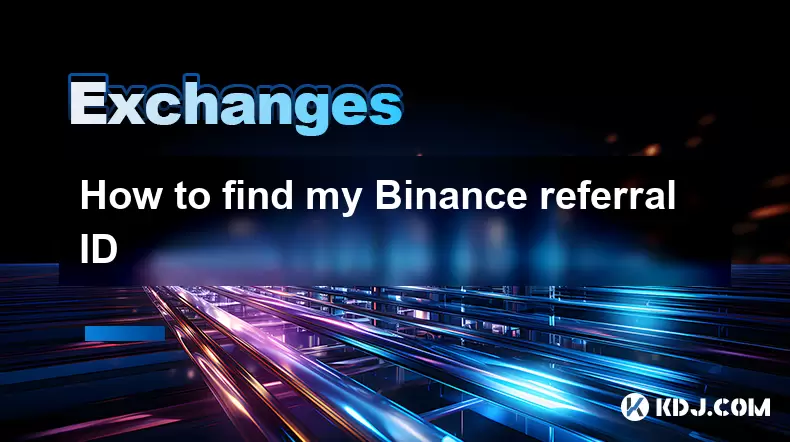
How to find my Binance referral ID
Jul 07,2025 at 06:29pm
What is a Binance Referral ID?A Binance Referral ID is a unique identifier assigned to each user on the Binance platform. This ID allows users to refer new traders to Binance and earn commissions from their trading fees. The referral program is an integral part of Binance’s ecosystem, encouraging community growth and rewarding active participants. Every...

Binance verification rejected why
Jul 07,2025 at 06:57pm
Understanding Binance Verification RejectionIf your Binance verification was rejected, you're likely searching for answers on why this happened and how to resolve it. Binance, as one of the world's largest cryptocurrency exchanges, requires users to complete identity verification to comply with Know Your Customer (KYC) regulations. When a verification r...

How to recover a lost Binance account
Jul 07,2025 at 09:07pm
What Happens When a Binance Account Is Lost?Losing access to your Binance account can be a distressing experience, especially if you hold significant digital assets. This typically occurs due to forgotten login credentials, loss of two-factor authentication (2FA) devices, or compromised accounts. Understanding the exact reason behind losing access is cr...

How to trade options on Binance
Jul 08,2025 at 04:35am
Understanding Options Trading on BinanceOptions trading allows investors to speculate on the future price of an asset without owning it. On Binance, users can trade crypto options, which are derivative contracts that give traders the right—but not the obligation—to buy or sell a cryptocurrency at a predetermined price before a specific date. This form o...

How to read Binance charts
Jul 07,2025 at 08:14pm
Understanding the Basics of Binance ChartsReading Binance charts effectively is essential for making informed trading decisions in the cryptocurrency market. Before diving into technical indicators and candlestick patterns, it's important to understand the basic layout of a chart on the Binance platform. The default chart interface displays price moveme...

How to delete my Binance account
Jul 08,2025 at 06:35am
How to Delete My Binance AccountIf you're considering deleting your Binance account, it's important to understand the process thoroughly. Binance is one of the largest cryptocurrency exchanges globally, and permanently closing your account involves several steps. This guide will walk you through each necessary action to ensure a smooth deletion. Prepari...

How to find my Binance referral ID
Jul 07,2025 at 06:29pm
What is a Binance Referral ID?A Binance Referral ID is a unique identifier assigned to each user on the Binance platform. This ID allows users to refer new traders to Binance and earn commissions from their trading fees. The referral program is an integral part of Binance’s ecosystem, encouraging community growth and rewarding active participants. Every...

Binance verification rejected why
Jul 07,2025 at 06:57pm
Understanding Binance Verification RejectionIf your Binance verification was rejected, you're likely searching for answers on why this happened and how to resolve it. Binance, as one of the world's largest cryptocurrency exchanges, requires users to complete identity verification to comply with Know Your Customer (KYC) regulations. When a verification r...
See all articles

























